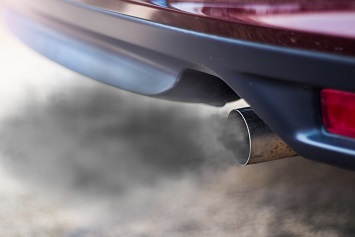In its 2018 Automotive Trends Report, the EPA states that estimated real-world CO2 emissions from model year (MY) 2017 light-duty vehicles were at a record low and fuel economy at a record high. The report covers vehicles manufactured in 2017, the most recent year for which the Agency has complete data. The report is based on data developed by the EPA’s National Vehicle and Fuel Emissions Laboratory in Ann Arbor, Michigan, or provided by manufacturers using official EPA test procedures.
In addition to CO2 emissions and fuel economy, the report covers technological developments and manufacturers’ fleet CO2 performance. (A manufacturer’s fleetwide CO2 performance measures how the fleet is performing in comparison to the CO2 standards, adjusted by the net impact of all applicable flexibilities, such as flex-fuel vehicles, air-conditioning efficiency improvements, and off-cycle technologies such as active aerodynamics, thermal controls, and idle reduction).
Further Improvements Anticipated
The report includes the following findings:
- For MY 2017, the average estimated real-world CO2 emissions rate for all new vehicles fell by 3 grams per mile (g/mi) to 357 g/mi, the lowest level ever measured.
- Fuel economy increased by 0.2 miles per gallon (mpg) to 24.9 mpg, a record high.
- Since 2004, CO2 emissions decreased 23%, or 104 g/mi, and fuel economy increased 29%, or 5.6 mpg. Over that time, CO2 emissions and fuel economy improved in 11 out of 13 years and have repeatedly achieved new records.
- Preliminary data suggest further improvements in MY 2018. Average estimated real-world CO2 emissions are projected to fall 8 g/mi to 348 g/mi, and fuel economy is projected to increase 0.5 mpg to 25.4 mpg.
- Twelve of the 13 largest manufacturers selling vehicles in the U.S. market improved their estimated real-world CO2 emissions and fuel economy between MYs 2012 and 2017.
- Over the same 5-year period, Toyota was the only large manufacturer that failed to improve CO2 emissions and fuel economy. Toyota’s performance was attributed to the manufacturer’s stronger emphasis on trucks; other companies also increased truck production and made modest improvements.
- Subaru had the largest decrease in CO2 emissions during this period, reducing emissions by 43 g/mi. Mercedes had the next-largest reduction at 42 g/mi, followed by Nissan-Mitsubishi at 40 g/mi. Subaru also had the largest improvement in fuel economy at 3.5 mpg, followed by Honda at 3.1 mpg and Nissan-Mitsubishi at 2.9 mpg.
- Average new vehicle fuel economy and horsepower continue to increase, while weight remains constant. Vehicles with higher weight, or more power, will generally have higher CO2 emissions and lower fuel economy. Since MY 2004, technology has been used to increase fuel economy and power while maintaining vehicle weight and reducing CO2 emissions.
- All large manufacturers are in compliance with the greenhouse gas (GHG) standards through MY 2017. The industry used a combination of technology and credits to achieve compliance in 2017, and a large bank of credits remains for the industry to use in future model years.
The EPA notes that one factor that contributed meaningfully to CO2 performance improvement was that production multipliers (e.g., one electric vehicle may be counted as two for compliance) took effect in MY 2017. These incentives are in place through MY 2019 before phasing out in 2021.
Unresolved Issues
Despite the progress the EPA reports, not all is well with autos. In their SAFE Vehicles proposal (August 24, 2018, Federal Register (FR)),the EPA and the National Highway Traffic Safety Administration (NHTSA) presented a plan to roll back the Corporate Average Fuel Economy (CAFE) and GHG standards the two agencies had set under President Barack Obama in 2012. That action set CAFE and CO2 emissions standards that annually became more stringent for cars and light trucks for MYs 2017 to 2025.
The 2018 proposed amendments would freeze the GHG and CAFE standards at 2020 levels through MY 2026. While some major automakers believed the 2012 rules were more than necessary, they have also been suggesting that the EPA and the NHTSA can increase the stringency of their proposals as long as they account for “market realities.” This point was made by the Alliance of Automobile Manufacturers in response to the 2018 Trends Report.
“Automakers are giving consumers greater choice than ever before in highly energy-efficient vehicles, and we want to continue our progress,” said the Alliance. “Having invested billions of dollars in technologies to reduce fuel use and carbon emissions, we have a huge stake in moving new vehicles off dealer lots and into consumers’ garages.”
California Waiver Talks Collapse
The auto industry is also concerned about the breakdown in talks between the EPA and California over the second part of the 2018 proposal—the EPA’s plan to revoke California’s Clean Air Act waiver, which allows the state to set its own tailpipe emissions standards. The EPA said the revocation was necessary to achieve “one national program.” Reportedly, the two parties agreed to compromise, but on February 21, 2019, the EPA terminated the discussions, stating that California “failed to put forward a productive alternative since the SAFE Vehicles Rule was proposed.” California leveled the same criticism at the EPA. Failure to reach a compromise will likely lead to extensive litigation should the federal government follow through with its proposal. This will create vast uncertainty for the industry.
“We always knew achieving one national program would be challenging,” commented the Alliance. “But one national program is worth striving for because it is the best way to maximize fuel economy and carbon reductions while preserving vehicle affordability and employment. We encourage everyone to keep focusing on how we get there, because this is in the best interests of all parties, including consumers.”

